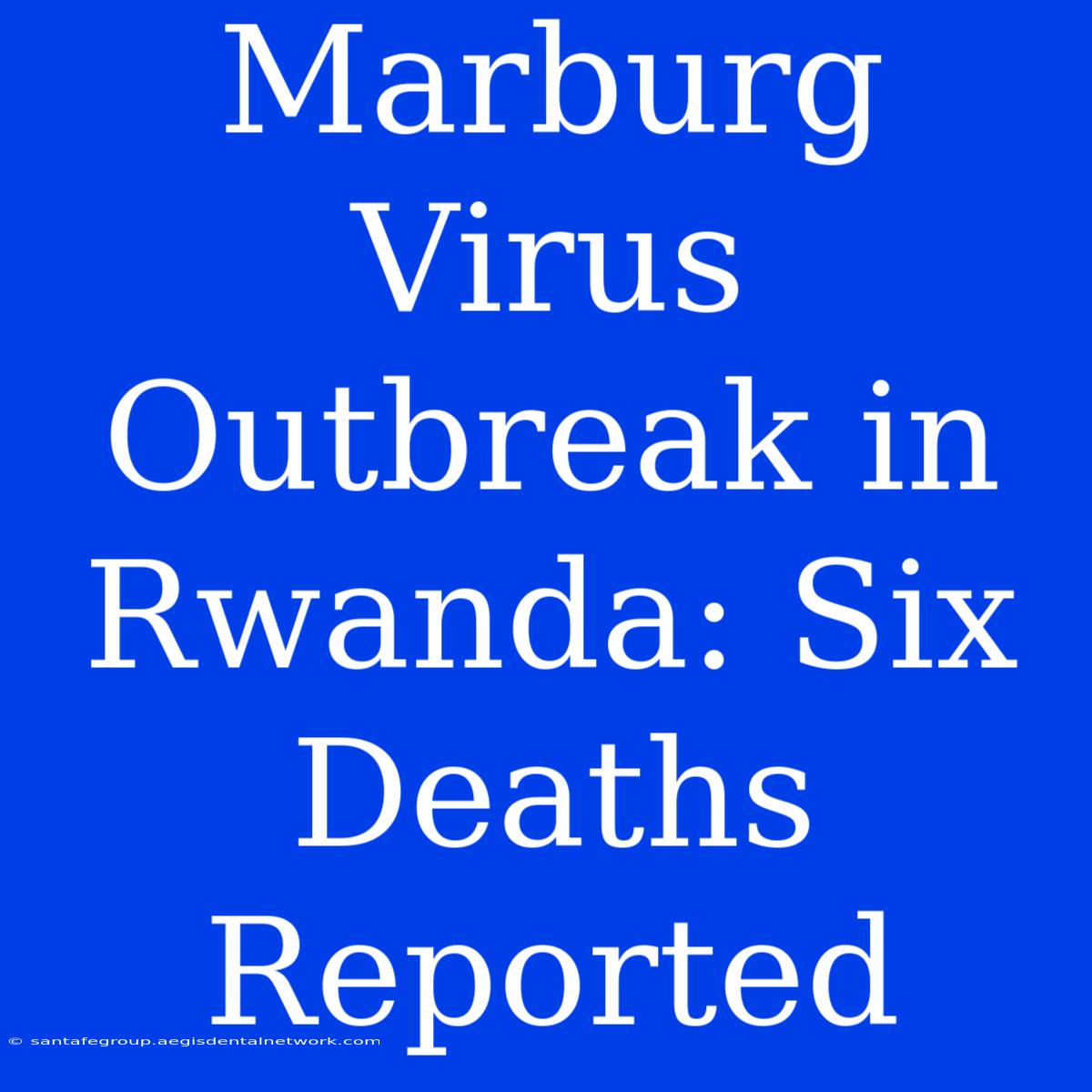Marburg Virus Outbreak in Rwanda: Six Deaths Reported - A Public Health Emergency?
Is the Marburg Virus Outbreak in Rwanda a cause for serious concern? The recent outbreak of the Marburg virus in Rwanda, resulting in six deaths, has raised alarms and prompted urgent public health measures. This rare and highly infectious disease, related to Ebola, poses a significant threat, demanding immediate attention and proactive response.
Editor Note: The Marburg Virus Outbreak in Rwanda has highlighted the importance of vigilance and robust public health systems in preventing and controlling outbreaks of dangerous diseases.
This situation underscores the critical need for understanding the virus, its transmission, and the steps necessary for effective containment. This article delves into the Marburg virus, its characteristics, the Rwandan outbreak, and the global response, offering insights into the challenges and potential solutions.
Analysis: We have analyzed information from official reports, scientific publications, and news articles to provide a comprehensive overview of the Marburg virus outbreak in Rwanda. Our analysis focuses on understanding the virus, its transmission dynamics, the current situation in Rwanda, and the global response.
Key Aspects of the Marburg Virus Outbreak
| Aspect | Description |
|---|---|
| Viral Characteristics | Marburg virus is a highly contagious and often deadly hemorrhagic fever, closely related to Ebola. |
| Transmission | The virus spreads through direct contact with infected individuals, bodily fluids, or contaminated materials. |
| Symptoms | Symptoms typically include fever, headache, muscle aches, and bleeding. |
| Outbreak Management | Effective outbreak management relies on rapid case detection, isolation, contact tracing, and supportive care. |
Marburg Virus
Introduction: The Marburg virus is a highly contagious and often deadly hemorrhagic fever virus. It is a filovirus, related to the Ebola virus, and is named after the German city where it was first identified in 1967.
Key Aspects:
- Highly Contagious: The virus can spread quickly through direct contact with infected individuals, their bodily fluids, or contaminated materials.
- Severe Illness: Marburg virus infection often results in severe illness characterized by fever, headache, muscle aches, and bleeding.
- High Fatality Rate: The fatality rate can be as high as 88%, but it varies depending on the specific strain and the availability of supportive care.
- No Specific Treatment: There is no specific treatment for Marburg virus disease, but supportive care, including hydration and managing symptoms, can improve survival rates.
Marburg Virus Outbreak in Rwanda
Introduction: The recent Marburg virus outbreak in Rwanda, confirmed in September 2023, has raised significant public health concerns.
Key Aspects:
- Confirmed Cases: Six deaths have been reported, with confirmed cases identified in the southwestern part of the country.
- Rapid Response: Rwandan health authorities have implemented rapid response measures, including contact tracing, isolation, and surveillance.
- International Collaboration: The World Health Organization (WHO) and other international partners are providing technical support and assistance to Rwanda.
- Public Health Measures: Public health measures include raising awareness, promoting hygiene practices, and restricting travel from affected areas.
Global Response
Introduction: The Marburg virus outbreak in Rwanda has triggered a global response, with international organizations and countries working together to contain the outbreak and prevent further spread.
Key Aspects:
- WHO Assistance: The WHO is providing technical and logistical support to Rwandan health authorities, including training, supplies, and coordination.
- International Collaboration: The international community is working collaboratively to share expertise and resources to combat the outbreak.
- Research and Development: Research efforts are ongoing to develop effective vaccines, treatments, and diagnostic tools for Marburg virus disease.
FAQs
Introduction: This section addresses frequently asked questions about the Marburg virus outbreak in Rwanda.
Questions:
- What are the symptoms of Marburg virus disease? The symptoms of Marburg virus disease are similar to those of Ebola virus disease and include fever, headache, muscle aches, and bleeding.
- How is the Marburg virus transmitted? The virus spreads through direct contact with infected individuals, their bodily fluids, or contaminated materials.
- What is the fatality rate of Marburg virus disease? The fatality rate of Marburg virus disease can be as high as 88%, but it varies depending on the specific strain and the availability of supportive care.
- Is there a vaccine for the Marburg virus? Currently, there is no approved vaccine for the Marburg virus, but research is ongoing to develop one.
- What can be done to prevent the spread of the Marburg virus? Preventing the spread of the Marburg virus requires practicing good hygiene, avoiding contact with infected individuals or their bodily fluids, and adhering to public health guidelines.
- What are the chances of the Marburg virus spreading to other countries? While the chances of the virus spreading to other countries are low, it is important to remain vigilant and implement appropriate public health measures to prevent its spread.
Tips for Preventing Marburg Virus Infection:
Introduction: This section provides practical tips for preventing Marburg virus infection.
Tips:
- Practice good hygiene: Wash your hands frequently with soap and water, especially after coming into contact with bodily fluids.
- Avoid contact with infected individuals: Stay away from anyone who is sick, especially if they have symptoms of a hemorrhagic fever.
- Avoid contact with bodily fluids: Use gloves and other protective gear when handling bodily fluids or contaminated materials.
- Cook food thoroughly: Make sure all food is cooked thoroughly to kill any potential contaminants.
- Stay informed: Keep up-to-date on the latest information about the Marburg virus outbreak from reputable sources.
Conclusion: The Marburg virus outbreak in Rwanda highlights the fragility of public health systems and the potential for emerging infectious diseases to spread rapidly. The situation underscores the critical need for robust surveillance systems, effective response measures, and international collaboration to prevent and control outbreaks. Continued research efforts are crucial to develop effective vaccines and treatments for this deadly virus.

